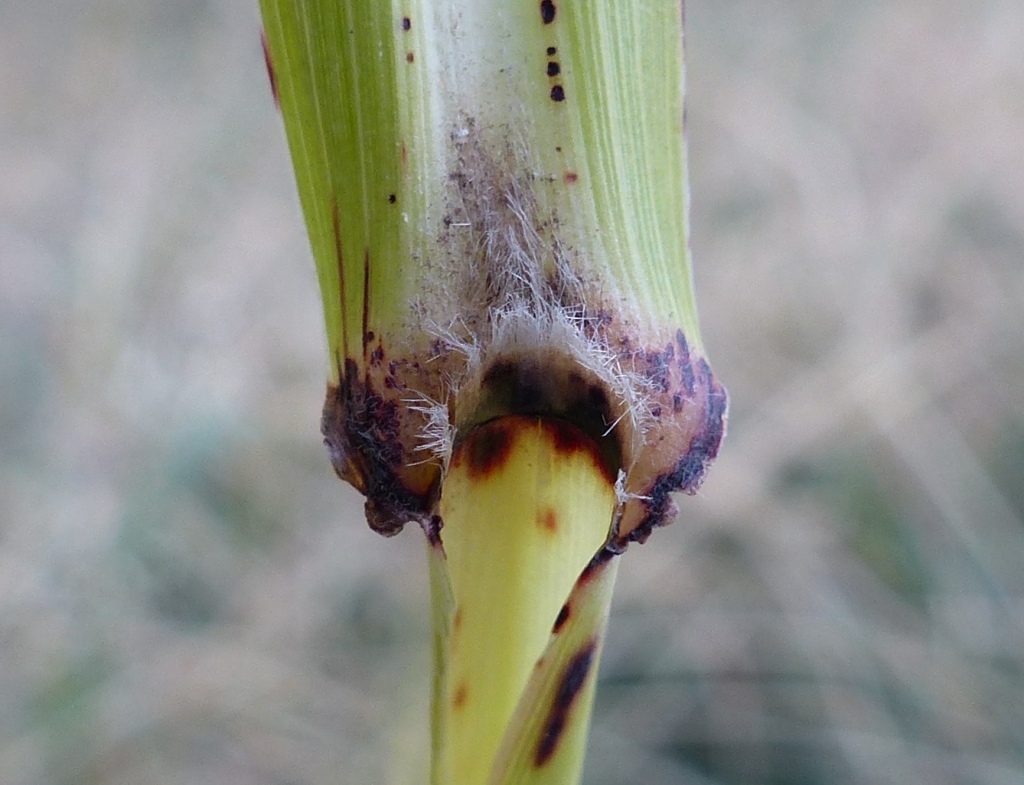Sorghum
Tufted or rhizomatous annuals or perennials. Culm internodes mostly solid. Leaf-blades mostly flat; ligules membranous, sometimes fringed. Inflorescence a panicle; terminal spikelets in 3s, others in pairs, the lower of each pair or triplet sessile and bisexual, the upper 1 or 2 pedicellate and male or sterile; glumes 2, truncate, subequal, becoming hardened and shining; lower lemma sterile, hyaline, shorter than glumes; upper lemma fertile, resembling lower, sometimes mucronate or awned; palea reduced or absent.
About 60 species of tropical and subtropical countries; about 20 in Australia, most native, 2 species established in Victoria (1 native and 1 naturalized).
In addition to the two species of Sorghum formally treated here, at least 2 other species are occasionally cultivated in Victoria and may occur along roadsides or as weeds in other crops, but apparently do not persist for more than 1 season and are not regarded as being naturalised in this State. Sorghum bicolor (L.) Moench (Grain Sorghum or Broom Millet), a native of Africa, is a robust annual to 3 m high, with stout, sweetly juicy, pithy culms and leaves to c. 6 cm wide, a dense panicle to c. 50 cm long with plump spikelets, with the ovoid grain exposed at maturity. It is grown for grain fodder and straw broom manufacture. Sorghum sudanense (Piper) Stapf (Sudan Grass) resembles S. halepense, but differs in being a non-rhizomatous annual and having longer (5.5–7 mm) spikelets, which fall at maturity attached to a small portion of the subtending branchlet. It is grown as a forage grass in warmer parts of the State.
Walsh, N.G. (1994). Poaceae. In: Walsh, N.G.; Entwisle, T.J., Flora of Victoria Vol. 2, Ferns and Allied Plants, Conifers and Monocotyledons, pp. 356–627. Inkata Press, Melbourne.
 Spinning
Spinning


